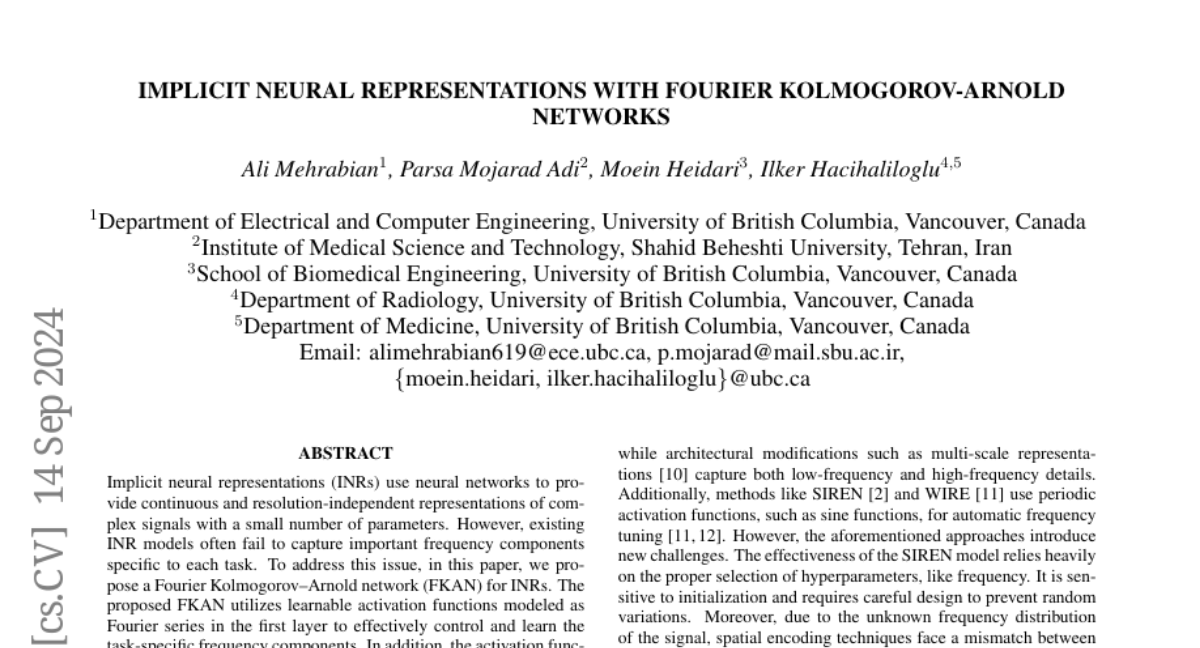Implicit Neural Representations with Fourier Kolmogorov-Arnold Networks
Ali Mehrabian, Parsa Mojarad Adi, Moein Heidari, Ilker Hacihaliloglu
2024-09-18

Summary
This paper discusses a new type of neural network called the Fourier Kolmogorov-Arnold Network (FKAN), which improves how we represent complex signals like images by using fewer parameters and capturing important details more effectively.
What's the problem?
Implicit neural representations (INRs) are useful for representing complex data continuously, but existing models often struggle to capture specific frequency details that are important for different tasks. This can lead to lower quality reconstructions of images or other signals, especially when high resolution is needed.
What's the solution?
The researchers developed FKAN, which uses activation functions modeled as Fourier series in its first layer. This allows the network to learn and control the specific frequency components needed for each task better. By improving how the network captures complex patterns and details, FKAN enhances the quality of both 2D images and 3D data representations. The experiments showed that FKAN outperformed other leading methods in various tasks, including image representation and 3D occupancy volume representation.
Why it matters?
This research is significant because it advances the field of neural networks by providing a more efficient way to represent complex signals. By improving the quality of reconstructions with fewer parameters, FKAN could lead to better applications in areas like computer graphics, virtual reality, and medical imaging, where high-quality representations are crucial.
Abstract
Implicit neural representations (INRs) use neural networks to provide continuous and resolution-independent representations of complex signals with a small number of parameters. However, existing INR models often fail to capture important frequency components specific to each task. To address this issue, in this paper, we propose a Fourier Kolmogorov Arnold network (FKAN) for INRs. The proposed FKAN utilizes learnable activation functions modeled as Fourier series in the first layer to effectively control and learn the task-specific frequency components. In addition, the activation functions with learnable Fourier coefficients improve the ability of the network to capture complex patterns and details, which is beneficial for high-resolution and high-dimensional data. Experimental results show that our proposed FKAN model outperforms three state-of-the-art baseline schemes, and improves the peak signal-to-noise ratio (PSNR) and structural similarity index measure (SSIM) for the image representation task and intersection over union (IoU) for the 3D occupancy volume representation task, respectively.